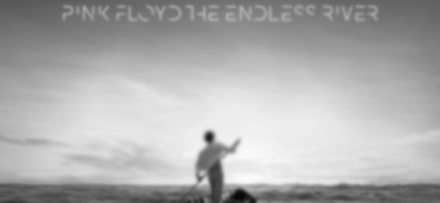We just published an updated, comprehensive guide on how to play the blues scale on our sister site, Beginner Guitar HQ. It is completely free and you can find it here: https://
Mark Schottinger from the movie The Parking Lot
Blues is a music genre and musical form which was originated in the Deep South of the United States around the 1870s by African-Americans from roots in African musical traditions, African-American work songs, and spirituals. Blues incorporated spirituals, work songs, field hollers, shouts, chants, and rhymed simple narrative ballads. The blues form, ubiquitous in jazz, rhythm and blues and rock and roll, is characterized by the call-and-response pattern, the blues scale and specific chord progressions, of which the twelve-bar blues is the most common. Blue notes (or "worried notes"), usually thirds, fifths or sevenths flattened in pitch are also an essential part of the sound. Blues shuffles or walking bass reinforce the trance-like rhythm and form a repetitive effect known as the groove.
Blues as a genre is also characterized by its lyrics, bass lines, and instrumentation. Early traditional blues verses consisted of a single line repeated four times. It was only in the first decades of the 20th century that the most common current structure became standard: the AAB pattern, consisting of a line sung over the four first bars, its repetition over the next four, and then a longer concluding line over the last bars. Early blues frequently took the form of a loose narrative, often relating the racial discrimination and other challenges experienced by African-Americans.
Many elements, such as the call-and-response format and the use of blue notes, can be traced back to the music of Africa. The origins of the blues are also closely related to the religious music of the Afro-American community, the spirituals. The first appearance of the blues is often dated to after the ending of slavery and, later, the development of juke joints. It is associated with the newly acquired freedom of the former slaves. Chroniclers began to report about blues music at the dawn of the 20th century. The first publication of blues sheet music was in 1908. Blues has since evolved from unaccompanied vocal music and oral traditions of slaves into a wide variety of styles and subgenres. Blues subgenres include country blues, such as Delta blues and Piedmont blues, as well as urban blues styles such as Chicago blues and West Coast blues. World War II marked the transition from acoustic to electric blues and the progressive opening of blues music to a wider audience, especially white listeners. In the 1960s and 1970s, a hybrid form called blues rock developed, which blended blues styles with rock music.
Lyrics
The lyrics of early traditional blues verses probably often consisted of a single line repeated four times. It was only in the first decades of the 20th century that the most common current structure became standard: the so-called "AAB" pattern, consisting of a line sung over the four first bars, its repetition over the next four, and then a longer concluding line over the last bars. Two of the first published blues songs, "Dallas Blues" (1912) and "Saint Louis Blues" (1914), were 12-bar blues with the AAB lyric structure.
W.C. Handy wrote that he adopted this convention to avoid the monotony of lines repeated three times. The lines are often sung following a pattern closer to rhythmic talk than to a melody.
Early blues frequently took the form of a loose narrative. African-American singers voiced his or her "personal woes in a world of harsh reality: a lost love, the cruelty of police officers, oppression at the hands of white folk, [and] hard times". This melancholy has led to the suggestion of an Igbo origin for blues because of the reputation the Igbo had throughout plantations in the Americas for their melancholic music and outlook on life when they were enslaved.
The lyrics often relate troubles experienced within African American society. For instance Blind Lemon Jefferson's "Rising High Water Blues" (1927) tells of the Great Mississippi Flood of 1927:
Although the blues gained an association with misery and oppression, the lyrics could also be humorous and raunchy:
Hokum blues celebrated both comedic lyrical content and a boisterous, farcical performance style. Tampa Red's classic "Tight Like That" (1928) is a sly wordplay with the double meaning of being "tight" with someone coupled with a more salacious physical familiarity.
Blues songs with sexually explicit lyrics were known as dirty blues. The lyrical content became slightly simpler in postwar blues, which tended to focus on relationship woes or sexual worries. Lyrical themes that frequently appeared in prewar blues, such as economic depression, farming, devils, gambling, magic, floods and drought, were less common in postwar blues.
The writer Ed Morales claimed that Yoruba mythology played a part in early blues, citing Robert Johnson's "Cross Road Blues" as a "thinly veiled reference to Eleggua, the orisha in charge of the crossroads". However, the Christian influence was far more obvious. The repertoires of many seminal blues artists, such as Charley Patton and Skip James, included religious songs or spirituals. Reverend Gary Davis and Blind Willie Johnson are examples of artists often categorized as blues musicians for their music, although their lyrics clearly belong to spirituals.
Form
The blues form is a cyclic musical form in which a repeating progression of chords mirrors the call and response scheme commonly found in African and African-American music. During the first decades of the 20th century blues music was not clearly defined in terms of a particular chord progression. With the popularity of early performers, such as Bessie Smith, use of the twelve-bar blues spread across the music industry during the 1920s and 30s. Other chord progressions, such as 8-bar forms, are still considered blues; examples include "How Long Blues", "Trouble in Mind", and Big Bill Broonzy's "Key to the Highway".
There are also 16-bar blues, such as Ray Charles's instrumental "Sweet 16 Bars" and Herbie Hancock's "Watermelon Man". Idiosyncratic numbers of bars are occasionally used, such as the 9-bar progression in "Sitting on Top of the World", by Walter Vinson.
History
Origins
Prewar blues
The American sheet music publishing industry produced a great deal of ragtime music. By 1912, the sheet music industry had published three popular blues-like compositions, precipitating the Tin Pan Alley adoption of blues elements: "Baby Seals' Blues", by "Baby" Franklin Seals (arranged by Artie Matthews); "Dallas Blues", by Hart Wand; and "The Memphis Blues", by W.C. Handy.
Handy was a formally trained musician, composer and arranger who helped to popularize the blues by transcribing and orchestrating blues in an almost symphonic style, with bands and singers. He became a popular and prolific composer, and billed himself as the "Father of the Blues"; however, his compositions can be described as a fusion of blues with ragtime and jazz, a merger facilitated using the Cuban habanera rhythm that had long been a part of ragtime; Handy's signature work was the "Saint Louis Blues".
In the 1920s, the blues became a major element of African American and American popular music, reaching white audiences via Handy's arrangements and the classic female blues performers. The blues evolved from informal performances in bars to entertainment in theaters. Blues performances were organized by the Theater Owners Bookers Association in nightclubs such as the Cotton Club and juke joints such as the bars along Beale Street in Memphis. Several record companies, such as the American Record Corporation, Okeh Records, and Paramount Records, began to record African-American music.
As the recording industry grew, country blues performers like Bo Carter
Tampa Red and Blind Blake became more popular in the African American community. Kentucky-born Sylvester Weaver
was in 1923 the first to record the slide guitar style, in which a guitar is fretted with a knife blade or the sawed-off neck of a bottle. The slide guitar became an important part of the Delta blues. The first blues recordings from the 1920s are categorized as a traditional, rural country blues and a more polished city or urban blues.
Country blues performers often improvised, either without accompaniment or with only a banjo or guitar. Regional styles of country blues varied widely in the early 20th century. The (Mississippi) Delta blues was a rootsy sparse style with passionate vocals accompanied by slide guitar. The little-recorded Robert Johnson combined elements of urban and rural blues. In addition to Robert Johnson, influential performers of this style included his predecessors Charley Patton and Son House. Singers such as Blind Willie McTell
and Blind Boy Fuller
performed in the southeastern "delicate and lyrical" Piedmont blues tradition, which used an elaborate ragtime-based fingerpicking guitar technique. Georgia also had an early slide tradition, with Curley Weaver
as representatives of this style.
The lively Memphis blues style, which developed in the 1920s and 1930s near Memphis, Tennessee, was influenced by jug bands such as the Memphis Jug Band or the Gus Cannon's Jug Stompers.
Performers such as Frank Stokes
and Memphis Minnie
used a variety of unusual instruments such as washboard, fiddle, kazoo or mandolin. Memphis Minnie was famous for her virtuoso guitar style. Pianist Memphis Slim began his career in Memphis, but his distinct style was smoother and had some swing elements. Many blues musicians based in Memphis moved to Chicago in the late 1930s or early 1940s and became part of the urban blues movement.
Urban blues
City or urban blues styles were more codified and elaborate, as a performer was no longer within their local, immediate community, and had to adapt to a larger, more varied audience's aesthetic. Classic female urban and vaudeville blues singers were popular in the 1920s, among them "the big three"—Gertrude "Ma" Rainey
and Lucille Bogan
,more a vaudeville performer than a blues artist, was the first African American to record a blues song in 1920; her second record, "Crazy Blues", sold 75,000 copies in its first month. Ma Rainey, the "Mother of Blues", and Bessie Smith each "[sang] around center tones, perhaps in order to project her voice more easily to the back of a room". Smith would "sing a song in an unusual key, and her artistry in bending and stretching notes with her beautiful, powerful contralto to accommodate her own interpretation was unsurpassed".
In 1920 the vaudeville singer Lucille Hegamin
became the second black woman to record blues when she recorded "The Jazz Me Blues", and Victoria Spivey
sometimes called Queen Victoria or Za Zu Girl, had a recording career that began in 1926 and spanned forty years. These recordings were typically labeled "race records" to distinguish them from records sold to white audiences. Nonetheless, the recordings of some of the classic female blues singers were purchased by white buyers as well. These blueswomen's contributions to the genre included "increased improvisation on melodic lines, unusual phrasing which altered the emphasis and impact of the lyrics, and vocal dramatics using shouts, groans, moans, and wails. The blues women thus effected changes in other types of popular singing that had spin-offs in jazz, Broadway musicals, torch songs of the 1930s and 1940s, gospel, rhythm and blues, and eventually rock and roll."
Urban male performers included popular black musicians of the era, such as Tampa Red, Big Bill Broonzy
and Leroy Carr
An important label of this era was the Chicago-based Bluebird Records. Before World War II, Tampa Red was sometimes referred to as "the Guitar Wizard". Carr accompanied himself on the piano with Scrapper Blackwell on guitar, a format that continued well into the 1950s with artists such as Charles Brown and even Nat "King" Cole.
Boogie-woogie was another important style of 1930s and early 1940s urban blues. While the style is often associated with solo piano, boogie-woogie was also used to accompany singers and, as a solo part, in bands and small combos. Boogie-Woogie style was characterized by a regular bass figure, an ostinato or riff and shifts of level in the left hand, elaborating each chord and trills and decorations in the right hand. Boogie-woogie was pioneered by the Chicago-based Jimmy Yancey and the Boogie-Woogie Trio (Albert Ammons, Pete Johnson and Meade Lux Lewis).
Chicago boogie-woogie performers included Clarence "Pine Top" Smith and Earl Hines, who "linked the propulsive left-hand rhythms of the ragtime pianists with melodic figures similar to those of Armstrong's trumpet in the right hand".[75] The smooth Louisiana style of Professor Longhair and, more recently, Dr. John blends classic rhythm and blues with blues styles.
Another development in this period was big band blues. The "territory bands" operating out of Kansas City, the Bennie Moten orchestra, Jay McShann, and the Count Basie Orchestra were also concentrating on the blues, with 12-bar blues instrumentals such as Basie's "One O'Clock Jump" and "Jumpin' at the Woodside" and boisterous "blues shouting" by Jimmy Rushing on songs such as "Going to Chicago" and "Sent for You Yesterday". A well-known big band blues tune is Glenn Miller's "In the Mood". In the 1940s, the jump blues style developed. Jump blues grew up from the boogie woogie wave and was strongly influenced by big band music. It uses saxophone or other brass instruments and the guitar in the rhythm section to create a jazzy, up-tempo sound with declamatory vocals. Jump blues tunes by Louis Jordan and Big Joe Turner, based in Kansas City, Missouri, influenced the development of later styles such as rock and roll and rhythm and blues. Dallas-born T-Bone Walker, who is often associated with the California blues style,[83] performed a successful transition from the early urban blues à la Lonnie Johnson and Leroy Carr to the jump blues style and dominated the blues-jazz scene at Los Angeles during the 1940s.
1950s

 The transition from country blues to urban blues that began in the 1920s was driven by the successive waves of economic crisis and booms which led many rural blacks to move to urban areas, in a movement known as the Great Migration. The long boom following World War II induced another massive migration of the African-American population, the Second Great Migration, which was accompanied by a significant increase of the real income of the urban blacks. The new migrants constituted a new market for the music industry. The term race record, initially used by the music industry for African-American music, was replaced by the term rhythm and blues. This rapidly evolving market was mirrored by Billboard magazine's Rhythm and Blues chart. This marketing strategy reinforced trends in urban blues music such as the use of electric instruments and amplification and the generalization of the blues beat, the blues shuffle, which became ubiquitous in R&B. This commercial stream had important consequences for blues music, which, together with jazz and gospel music, became a component of R&B.
The transition from country blues to urban blues that began in the 1920s was driven by the successive waves of economic crisis and booms which led many rural blacks to move to urban areas, in a movement known as the Great Migration. The long boom following World War II induced another massive migration of the African-American population, the Second Great Migration, which was accompanied by a significant increase of the real income of the urban blacks. The new migrants constituted a new market for the music industry. The term race record, initially used by the music industry for African-American music, was replaced by the term rhythm and blues. This rapidly evolving market was mirrored by Billboard magazine's Rhythm and Blues chart. This marketing strategy reinforced trends in urban blues music such as the use of electric instruments and amplification and the generalization of the blues beat, the blues shuffle, which became ubiquitous in R&B. This commercial stream had important consequences for blues music, which, together with jazz and gospel music, became a component of R&B.
After World War II, new styles of electric blues became popular in cities such as Chicago, Memphis, Detroit and St. Louis. Electric blues used electric guitars, double bass (gradually replaced by bass guitar), drums, and harmonica (or "blues harp") played through a microphone and a PA system or an overdriven guitar amplifier. Chicago became a center for electric blues from 1948 on, when Muddy Waters recorded his first success, "I Can't Be Satisfied". Chicago blues is influenced to a large extent by Delta blues, because many performers had migrated from the Mississippi region.
Howlin' Wolf, Muddy Waters, Willie Dixon and Jimmy Reed were all born in Mississippi and moved to Chicago during the Great Migration. Their style is characterized by the use of electric guitar, sometimes slide guitar, harmonica, and a rhythm section of bass and drums. The saxophonist J. T. Brown played in bands led by Elmore James and by J. B. Lenoir, but the saxophone was used as a backing instrument for rhythmic support more than as a lead instrument.
Little Walter, Sonny Boy Williamson (Rice Miller) and Sonny Terry are well known harmonica (called "harp" by blues musicians) players of the early Chicago blues scene. Other harp players such as Big Walter Horton were also influential. Muddy Waters and Elmore James were known for their innovative use of slide electric guitar. Howlin' Wolf and Muddy Waters were known for their deep, "gravelly" voices.
The bassist and prolific songwriter and composer Willie Dixon played a major role on the Chicago blues scene. He composed and wrote many standard blues songs of the period, such as "Hoochie Coochie Man", "I Just Want to Make Love to You" (both penned for Muddy Waters) and, "Wang Dang Doodle" and "Back Door Man" for Howlin' Wolf. Most artists of the Chicago blues style recorded for the Chicago-based Chess Records and Checker Records labels. Smaller blues labels of this era included Vee-Jay Records and J.O.B. Records. During the early 1950s, the dominating Chicago labels were challenged by Sam Phillips' Sun Records company in Memphis, which recorded B. B. King and Howlin' Wolf before he moved to Chicago in 1960.[92] After Phillips discovered Elvis Presley in 1954, the Sun label turned to the rapidly expanding white audience and started recording mostly rock 'n' roll.
In the 1950s, blues had a huge influence on mainstream American popular music. While popular musicians like Bo Diddley and Chuck Berry
both recording for Chess, were influenced by the Chicago blues, their enthusiastic playing styles departed from the melancholy aspects of blues. Chicago blues also influenced Louisiana's zydeco music, with Clifton Chenier using blues accents. Zydeco musicians used electric solo guitar and cajun arrangements of blues standards.
In England, electric blues took root there during a much acclaimed Muddy Waters tour. Waters, unsuspecting of his audience's tendency towards skiffle, an acoustic, softer brand of blues, turned up his amp and started to play his Chicago brand of electric blues. Although the audience was largely jolted by the performance, the performance influenced local musicians such as Alexis Korner and Cyril Davies to emulate this louder style, inspiring the British invasion of the Rolling Stones and the Yardbirds.
In the late 1950s, a new blues style emerged on Chicago's West Side pioneered by Magic Sam, Buddy Guy and Otis Rush on Cobra Records.
The "West Side sound" had strong rhythmic support from a rhythm guitar, bass guitar and drums and as perfected by Guy, Freddie King, Magic Slim and Luther Allison was dominated by amplified electric lead guitar. Expressive guitar solos were a key feature of this music.
Other blues artists, such as John Lee Hooker had influences not directly related to the Chicago style. John Lee Hooker's blues is more "personal", based on Hooker's deep rough voice accompanied by a single electric guitar. Though not directly influenced by boogie woogie, his "groovy" style is sometimes called "guitar boogie". His first hit, "Boogie Chillen", reached number 1 on the R&B charts in 1949.
By the late 1950s, the swamp blues genre developed near Baton Rouge, with performers such as Lightnin' Slim,[102] Slim Harpo, Sam Myers and Jerry McCain around the producer J. D. "Jay" Miller and the Excello label. Strongly influenced by Jimmy Reed, Swamp blues has a slower pace and a simpler use of the harmonica than the Chicago blues style performers such as Little Walter or Muddy Waters. Songs from this genre include "Scratch my Back", "She's Tough" and "I'm a King Bee". Alan Lomax's recordings of Mississippi Fred McDowell would eventually bring him wider attention on both the blues and folk circuit, with McDowell's droning style influencing North Mississippi hill country blues musicians.
1960s and 1970s
By the beginning of the 1960s, genres influenced by African American music such as rock and roll and soul were part of mainstream popular music. White performers such as the Beatles had brought African-American music to new audiences, both within the U.S. and abroad. However, the blues wave that brought artists such as Muddy Waters to the foreground had stopped. Bluesmen such as Big Bill Broonzy and Willie Dixon started looking for new markets in Europe. Dick Waterman and the blues festivals he organized in Europe played a major role in propagating blues music abroad. In the UK, bands emulated U.S. blues legends, and UK blues rock-based bands had an influential role throughout the 1960s.
Blues performers such as John Lee Hooker and Muddy Waters continued to perform to enthusiastic audiences, inspiring new artists steeped in traditional blues, such as New York–born Taj Mahal. John Lee Hooker blended his blues style with rock elements and playing with younger white musicians, creating a musical style that can be heard on the 1971 album Endless Boogie. B. B. King's singing and virtuoso guitar technique earned him the eponymous title "king of the blues". King introduced a sophisticated style of guitar soloing based on fluid string bending and shimmering vibrato that influenced many later electric blues guitarists. In contrast to the Chicago style, King's band used strong brass support from a saxophone, trumpet, and trombone, instead of using slide guitar or harp. Tennessee-born Bobby "Blue" Bland, like B. B. King, also straddled the blues and R&B genres. During this period, Freddie King and Albert King often played with rock and soul musicians (Eric Clapton and Booker T & the MGs) and had a major influence on those styles of music.
The music of the civil rights movement and Free Speech Movement in the U.S. prompted a resurgence of interest in American roots music and early African American music. As well festivals such as the Newport Folk Festival brought traditional blues to a new audience, which helped to revive interest in prewar acoustic blues and performers such as Son House, Mississippi John Hurt, Skip James, and Reverend Gary Davis. Many compilations of classic prewar blues were republished by the Yazoo Records. J. B. Lenoir from the Chicago blues movement in the 1950s recorded several LPs using acoustic guitar, sometimes accompanied by Willie Dixon on the acoustic bass or drums. His songs, originally distributed only in Europe, commented on political issues such as racism or Vietnam War issues, which was unusual for this period. His album Alabama Blues contained a song with the following lyric:
White audiences' interest in the blues during the 1960s increased due to the Chicago-based Paul Butterfield Blues Band featuring guitarist Michael Bloomfield, and the British blues movement. The style of British blues developed in the UK, when bands such as the Animals, Fleetwood Mac, John Mayall & the Bluesbreakers, the Rolling Stones, the Yardbirds, the supergroup Cream and the Irish musician Rory Gallagher performed classic blues songs from the Delta or Chicago blues traditions.
In 1963, LeRoi Jones, later known as Amiri Baraka, was the first to write a book on the social history of the blues in Blues People: The Negro Music in White America. The British and blues musicians of the early 1960s inspired a number of American blues rock fusion performers, including the Doors, Canned Heat, the early Jefferson Airplane, Janis Joplin, Johnny Winter, The J. Geils Band, Ry Cooder, and the Allman Brothers Band. One blues rock performer, Jimi Hendrix, was a rarity in his field at the time: a black man who played psychedelic rock. Hendrix was a skilled guitarist, and a pioneer in the innovative use of distortion and audio feedback in his music. Through these artists and others, blues music influenced the development of rock music.
In the early 1970s, the Texas rock-blues style emerged, which used guitars in both solo and rhythm roles. In contrast with the West Side blues, the Texas style is strongly influenced by the British rock-blues movement. Major artists of the Texas style are Johnny Winter, Stevie Ray Vaughan, the Fabulous Thunderbirds (led by harmonica player and singer-songwriter Kim Wilson), and ZZ Top. These artists all began their musical careers in the 1970s but they did not achieve international success until the next decade.
1980s to the present
Since the 1980s there has been a resurgence of interest in the blues among a certain part of the African-American population, particularly around Jackson, Mississippi and other deep South regions. Often termed "soul blues" or "Southern soul", the music at the heart of this movement was given new life by the unexpected success of two particular recordings on the Jackson-based Malaco label: Z. Z. Hill's Down Home Blues (1982) and Little Milton's The Blues is Alright (1984)
Contemporary African-American performers who work in this style of the blues include Bobby Rush, Denise LaSalle, Sir Charles Jones, Bettye LaVette, Marvin Sease, Peggy Scott-Adams, Mel Waiters, Clarence Carter, Dr. "Feelgood" Potts, O.B. Buchana, Ms. Jody, Shirley Brown, and dozens of others.
During the 1980s blues also continued in both traditional and new forms. In 1986 the album Strong Persuader announced Robert Cray as a major blues artist. The first Stevie Ray Vaughan recording Texas Flood was released in 1983, and the Texas-based guitarist exploded onto the international stage. John Lee Hooker's popularity was revived with the album The Healer in 1989. Eric Clapton, known for his performances with the Blues Breakers and Cream, made a comeback in the 1990s with his album Unplugged, in which he played some standard blues numbers on acoustic guitar.
However, beginning in the 1990s, digital multitrack recording and other technological advances and new marketing strategies including video clip production increased costs, challenging the spontaneity and improvisation that are an important component of blues music.
In the 1980s and 1990s, blues publications such as Living Blues and Blues Revue were launched, major cities began forming blues societies, outdoor blues festivals became more common, and[115] more nightclubs and venues for blues emerged.[116]
In the 1990s, the largely ignored hill country blues gained minor recognition in both blues and alternative rock music circles with northern Mississippi artists R. L. Burnside and Junior Kimbrough. Blues performers explored a range of musical genres, as can be seen, for example, from the broad array of nominees of the yearly Blues Music Awards, previously named W.C. Handy Awards[117] or of the Grammy Awards for Best Contemporary and Traditional Blues Album. The Billboard Blues Album chart provides an overview of current blues hits. Contemporary blues music is nurtured by several blues labels such as: Alligator Records, Ruf Records, Severn Records, Chess Records (MCA), Delmark Records, NorthernBlues Music, Fat Possum Records and Vanguard Records (Artemis Records). Some labels are famous for rediscovering and remastering blues rarities, including Arhoolie Records, Smithsonian Folkways Recordings (heir of Folkways Records), and Yazoo Records (Shanachie Records).
NOTABLE MENTIONS:
best 100 blues songs list https://digitaldreamdoor.com/pages/best_bluesong.html
NOTABLE MENTIONS:
best 100 blues songs list https://digitaldreamdoor.com/pages/best_bluesong.html
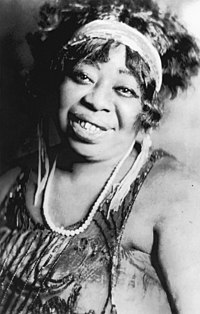
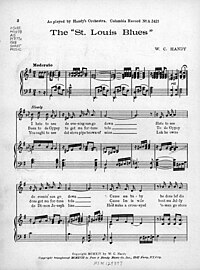

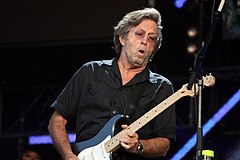

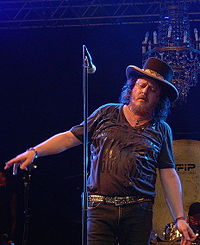

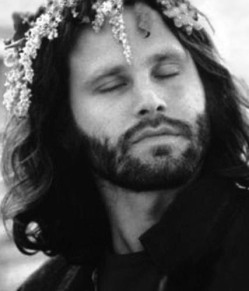 On this day, 8th December, in 1943, Jim Morrison was born. The little boy who would later become the self-entitled Lizard King had a relatively rough childhood, moving from town to town and feeling out of place anywhere he went. The teenager Jim (or Jimbo, as his friends would call him) seemed to be a full-out prankster, always joking fooling around – a period followed by what is now legend.
On this day, 8th December, in 1943, Jim Morrison was born. The little boy who would later become the self-entitled Lizard King had a relatively rough childhood, moving from town to town and feeling out of place anywhere he went. The teenager Jim (or Jimbo, as his friends would call him) seemed to be a full-out prankster, always joking fooling around – a period followed by what is now legend.





